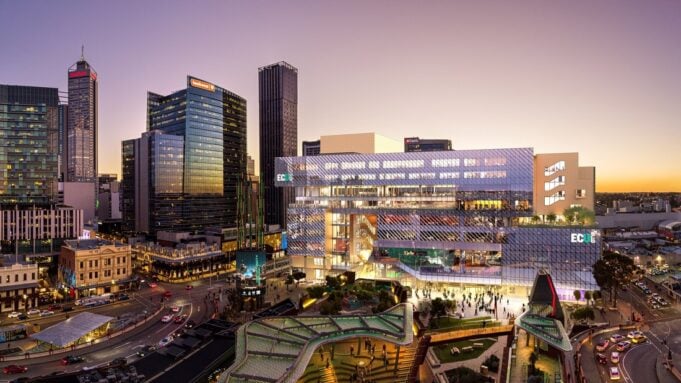The Western Australian Academy of Performing Arts’ (WAAPA) relocation to its new ECU City campus is not only on track but full steam ahead.
ECU City opens in semester one of 2026 as the centrepiece of the Perth City Deal, a collaboration between the Australian Government, Western Australian Government and ECU, to deliver a world-class university to the heart of Perth.
Executive Dean of WAAPA, Professor David Shirley, spoke to Variety AU/NZ about the relocation. “I have to say that in the four years or so since it was announced it’s been a really exciting and quite extraordinary journey,” he says. “The thing that’s made it exciting is the way in which the university has engaged with us, the architects and everybody involved in the 400-plus workshops that have taken place with regard to the design of the city campus facility to ensure that the spaces we actually end up moving into meet the vision of what was originally described and conceived.
“In the last few months there have been visits by staff to the city campus to go and look at some of those venues and teaching facilities. And there’s uniform excitement about it all, and about the tremendous opportunities that it’s going to afford us in terms of developing our teaching and learning, performance, partnerships and visiting artists.”
It makes perfect sense, of course, that architects and builders consult with the people who will be using the space. But it’s not something that necessarily happens.
“If you’re doing a new building, you always think we need to consult with the staff, especially if you’re working in a space as unique as WAAPA where we really do need extraordinary facilities like dance studios, rehearsal studios and performance venues,” Shirley states.
“So while that does make good sense I can think of a lot of different institutions across the world where that’s been in the vision, and then eventually that’s eroded because of economics or because of other constraints. So you do end up with sort of’ good facilities, but not the facilities that were initially anticipated.
“The lovely thing about this project is that there has been no compromise. We have been wedded to the vision from the very beginning, and there have been a number of world class consultants, technicians, designers, architects, etc, who’ve been into the building and said, ‘Wow, this is extraordinary. I can’t believe that you’ve got this, I’ve never seen anything like this anywhere else in the world.’ So when we hear that – and it’s now nearing completion – it’s a real testimony to the staff, the architects, the university, and the confidence of the vision going forward.”
A huge component in WAAPA reaching its full potential in the new ECU City campus has come via the Minderoo Foundation’s’ Premier Visiting Artists Program, in which WAAPA invites the world’s leading performing arts practitioners, designers and technicians to come and work with its students. As a leading international destination for performance education, the scope of what WAAPA has done has always been beyond doubt – the scope of what the institution will be able to do is beyond exciting.
“It’s going to be fantastic to be in a city campus,” Shirley says. “Most leading conservatoires in the world are located in a city environment, and all the benefits the city brings will enable us to work very closely with the communities around the school. So that’s going to be all the arts organisations — the WA Ballet, WASO, the State Theatre, the Blue Room. We’re going to be much closer to all of our partners, but we’re also going to be able to work in closer collaboration with the business community when going to the city campus.”
Along with WAAPA, the other schools moving to the city campus are Arts and Humanities (which houses the Screen Academy), the ECU Business School, Kurongkurl Katitjin (ECU’s Centre for Indigenous Australian Education and Research) and Australia’s largest Cyber Security research and education course. The outcome of cross-course collaborations also has huge potential.
“It’s going to be a place where we really can explore the vibrancy of new digital technologies in new performance spaces in interesting and exciting ways, with new collaborations across the school and with the professional partners around us, so that we really begin to break down some of the silos and open out new pathways to think about our work,” Shirley explains.
“I do believe that a school like WAAPA shouldn’t just be responding to an industry agenda. In other words, we’re not just producing musical theatre artists to populate stages all over the world. We should be producing artists that can set the agenda for the future and really begin to think about what performance practice and rehearsal practice and ensemble collaborative practice is going to look like 40 years from now.
“But of course, in order to be able to do that, you’ve got to have the technology and the facilities and the spaces, and the city campus and its location in the heart of the CBD enables us to create new pathways and think about what the performing arts get to look like 10, 20, 30, 40 years from now, when we are hoping that our graduates will be taking leading roles in the industry.”
This kind of transformational impact is vitally important in a world where a focus on STEM-based education (Science, Technology, Engineering and Mathematics) has resulted in something of a devaluation of arts courses.
“What I absolutely love about this project is that ECU is standing up as a leader of arts education,” Shirley insists, “particularly performing arts education, because we believe that it’s not just about wanting to produce world-leading violinists or ballet dancers or actors or directors, but that it has to be underpinned by a sense of social value – ‘as an individual, as an extraordinary artist, what is my value to the wider community?’ Because if it doesn’t have a value, virtuoso skill can be rather self-serving.
View this post on Instagram
“And yet we all know – and we all learnt through COVID – that when people were isolated and alone and couldn’t see each other, they sought comfort and solace from music, poetry, literature, film… all of those things that enable us to fire up our imagination and keep hope for a better world. That’s the way I would express it, and the arts did that during COVID in a really extraordinary way. So one of the things that we’ve learned coming out of that is that we really must defend the social value of the arts. And for me, I see the city campus as ECU’s embodiment of that vision.”
That moving into the CBD will no doubt raise the awareness of WAAPA in the general public’s mind is complemented by the notion of what WAAPA will bring to the city. With over 1,300 staff and students engaging the city environment, some 300-plus performances a year will now be staged in the city encompassing evenings and lunchtimes, while a range of short courses will allow access to wider enrolment and the opportunity for more people to make a connection with their own artistic potential.
In other words, WAAPA is entering the city with open arms.
“That touches on something very important,” says Shirley, “Because the success of WAAPA, I would say, is a tribute to the people of Western Australia over the last 45 years. People who’ve supported it and helped to set it up and come to see all those shows, but we need to be careful with that success. When we move into a new city campus, with all the opportunities it presents, we can’t just move in and operate the way that we’ve always done in the past.
“We have to operate in a way that’s open to embracing new learnings, new understandings, new relationships, new opportunities, because the arts never stay still, they’re always moving forward. It’s a bit like language: language is always changing and so do the arts, and if we don’t keep that in mind, we’d sort of get stuck. This move enables us to really interrogate and define what the performing arts means, both now and well into the future.”
To find out more about enrolling at WAAPA and the new ECU City campus head to waapa.ecu.edu.au.































